Dalmatia
Q1330965Dalmatia: the name the ancient Greeks and Romans gave to the area that is more or less identical to former Yugoslavia.
Roman Illyricum
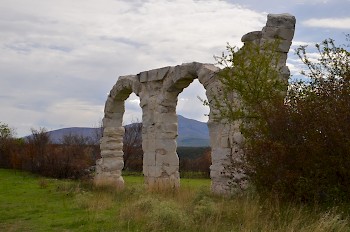
As indicated in the first part of this article, the Romans had conquered Illyria (more or less twentieth-century Yugoslavia with parts of Albania, Hungary, and Austria) in a series of wars that had started in the third century BCE, when Rome got involved in a series of conflicts along the Adriatic shores. The wars had come to an end in 33 BCE, when Octavian (the future emperor Augustus) had conquered the interior up to the Danube. The main source for these wars is Appian's Illyrian Wars.
In 27 BCE,note the Romans formally organized their conquests as a province, which they called Illyricum. It was divided into three administrative units (conventus) which in turn were subdivided into municipalities. However, although the area had been subdued, it was not yet fully pacified and there were revolts in 14-10 BCE and in 6-9 CE.
Romanization

After the suppression of these insurrections, Romanization was swift. Many aspects of Illyrian life changed. There were fortresses for legions, like Burnum, and forts for auxiliary units. Soldiers who had served as auxiliaries obtained Roman citizenship; their sons could serve in the legions. At a later stage, the troops were transferred to the Danube, where the frontier zone from Noricum to Thrace was called “Limes Illyricus”.

An important road was developed, leading from Istria along the river Sava to Singidunum (modern Belgrade), where the Sava emptied itself into the Danube. Towns along this road, like Emona (Ljubljana) and Andautonia, flourished. Another, older road started in Dyrrhachium and connected the Adriatic shore with Thessalonica and Byzantium: the Via Egnatia. The old Greek cities on the Adriatic Sea benefited and new towns were founded. Latin became the dominant language. The gold mines of central Illyricum were exploited. The cultivation of the vine was introduced.
But most of all: there were many cities. From south to north along the coast were Rhizon (once the capital of “real Illyria”), Epidaurum (near modern Dubrovnik), the twin cities Spalatum and Salona (Split and Solin), Narona (Vid), and Iader (Zadar). The road from Istria (main city: Pola) to the Danube passed along Emona (Ljubljana), Andautonia, Siscia (Sisak), Sirmium (Sremska Mitrovica), and Singidunum. Along the Danube were Vindobona (Vienna), Carnuntum, Aquincum (Budapest), Mursa, and Singidunum again. The interior was less urbanized, although the northern towns of Celea and Poetovio (Celje and Ptuj) and the road station at Šempeter deserve to be mentioned.
Dalmatia

Somewhere between 20 and 50 CE, Illyricum was split into llyricum Superior and Illyricum Inferior, the upper and lower halfs of the province. The governor of Upper Illyricum resided in Salona on the Adriatic coast, while his colleague in Lower Illyricum preferred one of the military camps along the Middle Danube. During the reign of the emperor Vespasian (r.69-79), the two provinces were renamed Dalmatia and Pannonia.
Both provinces flourished in the second century. The Roman way of life implied the construction of several types of buildings: temples, baths, theaters, amphitheaters, market squares, roads, and so on. All these monuments are known from the second and third centuries. Because there were soldiers around, who were quite well-paid, substantial investments were possible.
Conversely, investment in agriculture made the Illyrians wealthy, allowing them to become influential senators. In the third and fourth centuries, many men from Dalmatia reached high positions. Some of them even wore the imperial purple: Claudius II (r.268-70), his brother Quintillus (r.270), Aurelian (r.270-75) and Probus (r.276-82) were all born in Sirmium. Diocletian (r. 284-305) was from Salona, Constantius I (r.305-306) and his son Constantine the Great (r.306-337) were born in Naissus (modern Niš).
The tetrarchy
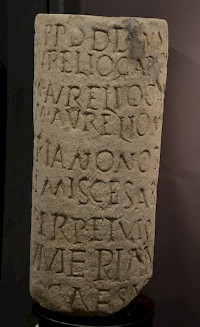
Diocletian came to power after the "Crisis of the Third Century", several decades in which the Roman Empire had to cope with an aggressive new Iranian empire, new Germanic tribes (e.g., the Franks, Alamani), disastrous inflation, civil wars, plague, and deurbanization. At one point, both the western and eastern peripheries had become independent, but Aurelian added these Gallic and Palmyrene empires to the central state again. (Palmyra received a garrison of Illyrian soldiers.) Diocletian reorganized the army, the empire, and its finances.
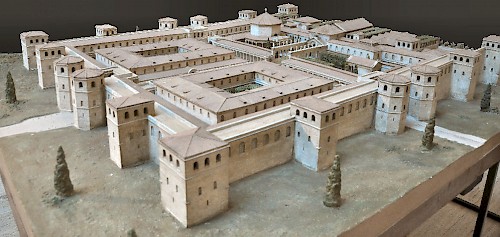
One of his measures was to divide the Roman Empire into four prefectures, which were ruled by a college of four emperors ("the tetrarchs"). One of these prefectures was called Illyricum and was essentially the hinterland of the Limes Illyricus that was mentioned above. Later, this large administrative unit was split into two parts, western and eastern, which were to be part of the Western Roman Empire and the Eastern Roman Empire. (The division still exists as the boundary between Latin and Greek Christianity.)
In 305, Diocletian retired, after a reign of twenty-one years, to a castle-like mansion he had built on the Adriatic shore near Salona, in Spalatium. The palace of the man who had restored order in the Roman world still dominates the old city of Split.
Late Antiquity
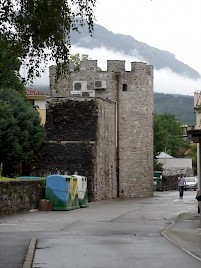
In the fourth century, Christianity became popular. At the same time, the frontier along the Danube was fortified. Although our sources mention several campaigns against foreign enemies, the Roman Empire remained strong. Still, there was a gradual penetration of Germanic-speaking "barbarians", who could be settled as peasants (and tax payers) in Illyricum, but could also be violent looters. In c.400, the Thervingi passed from Greece through Illyricum to northern Italy. The Huns invaded in 441 and 447.
Several years later, the East-Roman (or Byzantine) emperor Marcian (r.450-457) allowed the Ostrogoths to settle in Pannonia. This was the beginning of several chaotic decads, in which one Marcellinus tried to get create some order. In Dalmatia, he created a quasi-independent state of his own, not unlike the realms that in western Europe were created by military men of (often) Germanic descent. Marcellinus' relative Julius Nepos was to become son-in-law of the Byzantine emperor Leo and would be appointed as emperor in the west, which he held from the summer of 474 until the summer of 475.
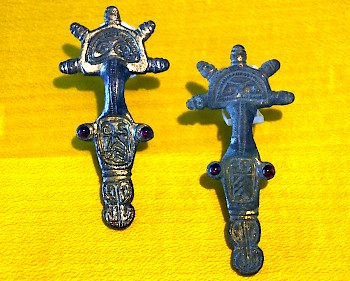
However, he was put aside by the supreme commander of the army in western Europe, Orestes, and forced to retire to Dalmatia, where he was recognized by Odoacer, who succeeded Orestes as supreme army commander in 476. Four years later, Nepos was killed, and Odoacer conquered Dalmatia, which was almost immediately raided by the Ostrogoths from Pannonia (481).
In these years, the Roman administration of the western provinces was collapsing. Trying to kill two birds with one stone, the emperor Zeno (r.474-491) directed the Ostrogothic king Theodoric to Italy: Illyricum would become more quiet while there was a chance that Italy would be recovered. In several years, the Ostrogoths conquered all of Italy, but Dalmatia and Pannonia remained a war zone.
 Salona, Sarcophagus of Julia Aurelia Hilaria |
 Promanja, Bracelet |
 Sirmium, Germanic pottery |
 Zmajevac, Fittings of a scabbard |
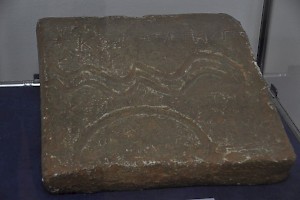
The land in Pannonia and Dalmatia that the Ostrogoths had evacuated, was now open to new invaders. In 536, the emperor Justinian (r.527-565) recovered part of Dalmatia. The splendid Euphrasian Basilica in Parentium (modern Poreč in Istria) was built in these years. Not much later, the Avars conquered Pannonia and the interior of Dalmatia. (Rooftiles in Sirmium were inscribed with prayers against the invaders.) Using central Dalmatia as their base, the Avars proceded to raid the ports along the Adriatic Sea. For example, Salona was sacked in 615; its inhabitants evacuated the city and settled in nearby Spalatum.
 Poreč, First Basilica, Pavement |
 Poreč, Euphrasian Basilica, Apse |
 Poreč, Euphrasian Basilica |
 Poreč, First Basilica, Mosaic |

After c.600, we read about new settlers in Dalmatia: the Slavs. In western Dalmatia, they united as the Croatians and became Roman Catholic; in eastern Dalmatia, they were known as the Serbs and converted to Greek Christianity. As indicated above, this difference still exists.
Meanwhile, the ancient coastal cities remained strong enough to defend their independence, albeit with help from outside. Sometimes they were looking for protection to the east, sometimes they found allies in the west. (Eventually, Venice would take control of these ports.) In the interior, the Illyro-Roman population retreated to inaccessible sites like Rifnik, ending the story of ancient Illyricum where it had started: in fortified settlement on hilltops.











